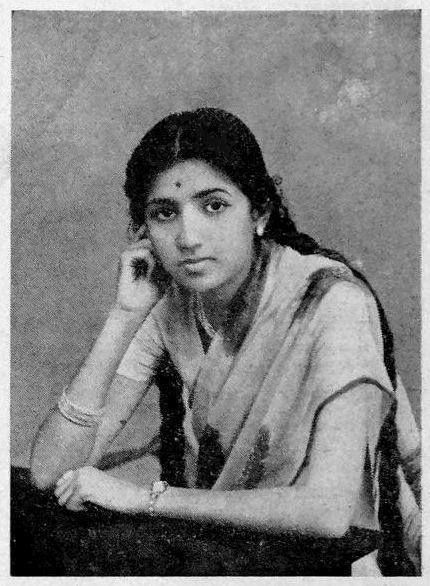

Sapna Ban Saajan Aaye
Raga-Yaman
Year: 1951
Film: Shokhiyan
Composer: Jamal Sen
We have seen some evening sandhi-prakash melodies recently. As the sun sets and the first stars appear, it is time of the early night raags. The king of this realm is undoubtedly Yaman. It corresponds roughly to the Lydian mode, and in swara parlance, it has a teevra M and all other notes are shuddha. Yaman (mostly) eschews S and P in aroha, and the mirrored pair of note clusters N R G R S and M D N D P immediately establish its identity. There is a special P R S movement that is frequently used to return to Shadja. It is an expansive raag, with practically unlimited potential for improvisation. It shines in all octaves and at various tempi, making it a mainstay on the concert stage and the recording studio.
Yaman is the quintessential symbol of classical music. Most singers remember it as one of the first major raags they learnt. It is also the pinnacle of raag understanding. To illustrate, let me quote a (possibly apocryphal) anecdote. The great Shankarrao Pandit (father and Guru of Krishnarao Shankar Pandit), on his deathbed at a very ripe old age, expressed the regret of one lifetime being too short with ‘yaman ab kuch kuch samajh mein aa raha hai’.
It also encapsulates the major Kalyan raagang, which melds with many raags to create new melodies. Let me mention the enthralling Yaman Kalyan, obtained by injecting a mellow shuddha m into the Yaman scaffolding, causing endless debates about whether Yaman and Kalyan are two separate raags.
There is no dearth of great Yaman recordings by classical musicians. This meeting of two of the greatest musical minds of the 20th century is simply superb - U. Vilayat Khan and U. Bismillah Khan (Watch on Youtube). On the vocal side, I want to cite this rare recording of U. Rahimat Khan (he was the son of U. Haddu Khan, one of the pioneers of Gwalior gharana). It is worth noting how much influence he has had on singers across gharana boundaries, including the likes of U. Abdul Karim Khan (Watch on Youtube).
Yaman, strangely enough, is not commonly sung in Thumri and allied forms (though the same sensibility is attained through Manjh Khamaj), but is very common in lighter forms, ghazals (think ‘aaj jaane ki zid na karo’, and ‘ranjish hi sahi’), and of course film songs. Film songs on Yaman would be an entire book. Lata had a special facility with Yaman and her songs based on the raag would definitely make a chapter! Let us take a look at a few.
The first song is 'Bade Bhole Ho' from the film Ardhangini, composed by Vasant Desai. It opens with a brief alaap that showcases all the stock phrases of Yaman, the purity of Lata’s aakar making the opening very special. It is a through-composed song, each antara being different, each more beautiful than the next one, and yet holding together as a unit. It is peppered with enticing murkis. It is a sad, devotional piece, home ground for Lata. (Watch on Youtube).'Tujhyaa Preeteeche Dukkh Malaa'- the (earlier) Marathi version of the song for the film Amar Bhupali is equally good, if not better! (Watch on Youtube).
Although Bhabhi Ki Chudiyan is best-known for ‘jyoti kalash’, there is an equally beautiful, devotional song- 'Lau Lagaati' for the evening. Babuji has outdone himself with this composition, also with different tunes for the antara. I often think of Lata as the queen of antaras, and this song is illustrative of my claim. She hits a home run with the second antara - the murki of ‘thaali hriday ki’ stands out. But then the sanchari-like third antara comes along and the ‘prabhu dhanyavaad hai’ stirs the heartstrings anew. (Watch on Youtube).
The world of Lata’s Yaman songs would not be complete without 2 of Madan Mohan’s compositions. The first one- 'Jaa Re Badraa Bairee Jaa' from Bahana is structured like a drut bandish and brings out the brightness of the raag beautifully. (Watch on Youtube).
His other Yaman tour de force is 'Jiya Le Gayo Jee Moraa Saawariyaa' from Anpadh. The composition is highly creative, adorned by murkis and khatkas fit together very nicely. The first antara begins with a beautiful sargam passage expertly sung, while the second one launches with a lovely brief taan. Yaman’s versatility is on display with this ebullient song. Truly one of the great songs of its kind. (Watch on Youtube).
Roshan was very adept at casting classical bandishes into songs. The Yaman standard ‘e ri aali piya bin’ is used as a part of the opening credits in Raag Rang. It is a brisk (drut-laya) composition and compresses all the major classical devices into a very compact format. Lata starts with a breath-taking taan and follows up with a bol-taan, the likes of which are rarely if ever heard in film songs. Then the main body of the bandish appears as-is. Then comes a sargam taan, and another lovely aakaar taan, ending with a tihai. This is 1952, and Lata sings like an angel. (Watch on Youtube).
Jamal Sen used Yaman for 'Sapna Ban Saajan Aaye', a soft romantic song with traces of nostalgia and perhaps even reflected wistfulness. It is one of my favorite Lata Yamans. She sings this with great thehraav - an often-underrated aspect of her gayaki. It begins with a vocal prelude which has an exquisite alaap and delightful meend work. Her return to S with ‘...laaj se nain’ and then again with ‘...bain’ is fantastic. The main melody is in a medium tempo, giving room for lingering notes and slow arohi taans. There is no weakness of composition or singing anywhere. It is a flawless gem.
Author info is not available!